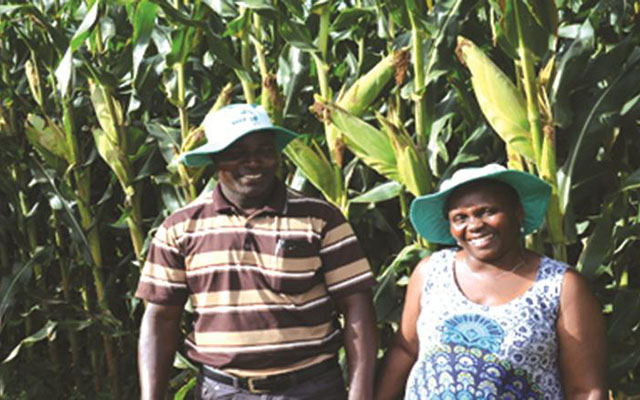Manicaland farmers in moisture fix

Samuel Kadungure Senior Reporter
FARMERS who planted huge hectarages of long season maize varieties risk incurring losses as the crop still to be harvested due to high moisture content is exposed to a multiplicity of threats in the field.
Maize farmers in Manicaland whose crops are still in the fields are in a quandary due to threats posed by veld fires, termites, theft, stray animals and molding.
Most farmers with large hectarages of maize have not started harvesting their crop due to higher moisture content than what is required by the Grain Marketing Board (GMB).
Acceptable moisture content for maize should be 12,5 percent maximum and farmers are regularly testing but the levels are still high.
Provincial Agritex Officer for Manicaland, Mrs Phillipah Rwambiwa, said grain harvested with high moisture content was susceptible to molding and rapid deterioration.
Such grain risks rejection by the GMB.
The GMB is rejecting the crop insisting that the maize should be dried to safe moisture levels that inhibit the activity of micro-organisms.
Stranded farmers are now falling victim to middlemen who are buying their maize at $150 instead of $390 offered by the GMB.
Farmers are faced with a tough choice as they have to cover transport costs.
It is more expensive to take the grain back home without anything to cover the transport costs.
The GMB has advised farmers to take samples to their nearest depot and have the moisture content analysed before carrying the whole lot.
Mrs Rwambiwa admitted the farmers were now in a fix as the drying period continues dragged on due to high humidity in the atmosphere.
“The moisture content is still high, therefore farmers cannot harvest and sell to the GMB. The maize is meant to be put in silos and the GMB argues it cannot store grain with high moisture content as it is susceptible to molding,” said Mrs Rwambiwa.
“And given the hectarage, we expect farmers to use combine harvesters, which again cannot effectively shell the cobs with high moisture content. Also during the drying period, and to ensure high-quality and safe food, the same farmers are expected to maintain and protect the unharvested grain from insect and pests, veld fires, theft and stray animals, otherwise they risk incurring huge losses,” said Mrs Rwambiwa.
Headlands farmer, Mr Gijima Msindo, said the moisture content of his crop was between 13,5 and 18 percent.
Termites are now attacking the crop.
“The crop is falling due to the weight of the cobs and is being attacked by termites. Our farms are surrounded by A1 farmers, who have let loose their livestock, most of which is straying into our farms. We are in a quandary and accruing additional labour costs,” said Mr Msindo.
“I have hired additional manpower to pick all the falling stalks and stack them to minimise the losses. Government should assist us with driers because we risk losing a huge chunk yet we are almost there,” said Mr Msindo.
He planted 200 hectares under Command Agriculture.
It has also emerged that farmers, who have started harvesting and had overstated the planted hectarage are being exposed as combine harvesters can accurately indicate the harvested hectarage.
“I cannot harvest at a time the GMB is turning away other farmers on the basis of high moisture content, but we have genuine fears. Just imagine, the fire season has started, and anything can happen. The fields are being manned by guards day and night, but it is expensive,” said Mr Msindo.
“This is a lesson for every farmer, long season varieties should be planted at the start of the season. We should embrace other varieties as the season progresses,” said Mr Msindo.
Before delivering the maize, farmers are required to register and get a grower’s number.
Registration is instant and payment is centrally done at GMB Head office within five days.
Those with no bank accounts are being paid via EcoCash.









Comments